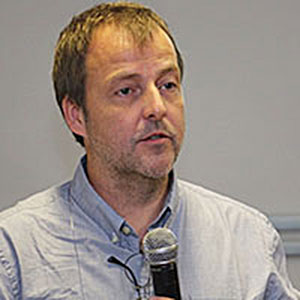Biography
Professor Frederic Tripet is Director of the Centre for Applied Entomology & Parasitology at the University of Keele. He holds a doctorate in Behavioural Ecology and Evolutionary Biology from the University of Bern, Switzerland, complemented by postdoctoral training in Molecular Biology and Population Genetics from the University of California Los Angeles, University of Texas Medical Branch and University of California Davis. His collaborative research partnerships with major vector endemic countries span five continents and focus on the applied integrative biology of mosquitoes that transmit human pathogens, such as Malaria, Dengue, Chikungunya and Zika, with a view on developing novel tools for their control.
Prof. Frederic Tripet is a partner and field entomology technical coordinator on the Target Malaria consortium, a not-for-profit research consortium sponsored by the National Institutes for Health and the Bill and Melinda Gates Foundation that aims to develop new approaches to sterile male mosquito releases to reduce the population of malaria-transmitting mosquitoes in sub-Saharan Africa.
Research and scholarship
Arthropod-borne diseases are responsible for the death of millions of people per year. Research in my laboratory focuses on integrative biology of arthropods that transmit major human diseases. Our research projects combine studies in molecular ecology, ecological genomics, population genetics and behaviour in order to generate results of broad ecological importance that feed back on our understanding of vector population structure, pathogen transmission and vector control. We have ongoing projects and collaborations on Anopheles gambiae the vector of Malaria in Sub-Saharan Africa and Aedes aegypti and Aedes albopictus vectors of Dengue fever. Past projects include population genetic studies on Triatoma dimidiata vector of Chaga’s disease in Central America, and Sandflies vectors of Leishmaniasis in various parts of the world.

|
|
Above left: Female Lutzomia longipalpis vector of Leishmaniasis feeding (WHO/TDR/Stammers) Above right: Female Aedes albopictus vector of dengue feeding (WHO/TDR/LSTM) |

|
|
Above left: A triatomine bug (Rhodnius prolixus) vector of Chaga’s disease feeding (WHO/TDR/Stammers) Above right: Multiplication of Trypanosoma cruzii amastigotes and destruction of adjacent host heart tissue (WHO/TDR/Stammers) |
Research projects
Mosquito Reproductive Behaviour
An important focus of our research since the late 1990s has been Mosquito Mating Behaviour. Why is it so relevant to vector control and disease transmission?
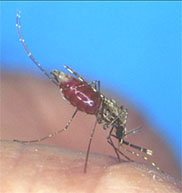 First, mosquito mating behaviours such as swarming and mate choice are key to our understanding of population structure and speciation in the Anopheles gambiae complex whose recently-diverged sibling species are responsible for the majority of transmission in Africa (Fig. 1 - Section I). Second, identifying mechanisms of mate recognition could lead to the development of new vector control approaches and is key to the production of competitive males for malaria control strategies relying on mosquito releases (Section II). Finally, interspecific reproductive interactions between mosquito species such those described between the Yellow fever and Tiger mosquitoes can be important determinants of their distribution, hence their vectorial importance (Section III).
First, mosquito mating behaviours such as swarming and mate choice are key to our understanding of population structure and speciation in the Anopheles gambiae complex whose recently-diverged sibling species are responsible for the majority of transmission in Africa (Fig. 1 - Section I). Second, identifying mechanisms of mate recognition could lead to the development of new vector control approaches and is key to the production of competitive males for malaria control strategies relying on mosquito releases (Section II). Finally, interspecific reproductive interactions between mosquito species such those described between the Yellow fever and Tiger mosquitoes can be important determinants of their distribution, hence their vectorial importance (Section III).
Fig. 1 - The sibling species of the Anopheles gambiae complex are the main vectors of malaria in Sub-Saharan Africa and are responsible for hundred-thousands of deaths yearly in endemic regions
I. Functional speciation genomics of Anopheles gambiae
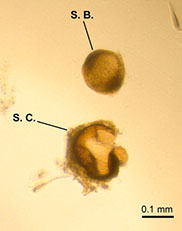 Mechanisms of conspecific mate recognition such as spatial swarm segregation and close range mate recognition mechanisms are particularly relevant to our understanding of speciation in the Anopheles gambiae complex. In collaboration with the Malaria Research and Training Centre in Bamako, Mali, we pioneered genetic analyses of sperm transferred to females in order to quantify pre-mating reproductive barriers in this species complex (Tripet et al. 2001-2003) (Fig. 2).
Mechanisms of conspecific mate recognition such as spatial swarm segregation and close range mate recognition mechanisms are particularly relevant to our understanding of speciation in the Anopheles gambiae complex. In collaboration with the Malaria Research and Training Centre in Bamako, Mali, we pioneered genetic analyses of sperm transferred to females in order to quantify pre-mating reproductive barriers in this species complex (Tripet et al. 2001-2003) (Fig. 2).
Fig. 2 - Novel molecular assays of sperm transferred to females have enabled studies of assortative mating and reproductive investment in An. gambiae
Thanks to support from the Natural Environmental Research Council (NERC), Medical Research Council (MRC) and Department for International Development (DFID), we identified several candidate assortative mating genes associated to the pericentromeric region of the X-chromosome speciation island through functional comparative genomics studies (Aboagye-Antwi et al. 2015) (Fig. 3). This work laid the foundations for functional studies of speciation genes in collaboration with the Institut de Recherche des Sciences de la Santé, Bobo Dioulasso, Burkina Faso and the University of Ghana, Legon.

Fig. 3 - Genomic structure of recombinant strains - The genomes of the assortatively-mating RbMM, RbSS and parental Mopti strains were compared using FST estimates at ~3x106 SNP marker loci (left Y-axis and red, blue and black lines). The genomic region introgressed from Kisumu into the Mopti genetic background and differing between the RbMM and RbSS recombinant strains is characterized by high FST values (blue shade) and extends from position ~14.5Mb to the centromere on chromosome X. The RbMM and RbSS differed at 160 protein-changing positions all of which located within the introgressed island and flanking region (right Y-axis, grey histogram bars). The pericentromeric region sharing conserved fixed differences with the field Anopheles coluzzii and gambiae s.s populations starts at position ~18.1Mb (orange shade). The position of inversions c, u and a on chromosome 2 is indicated (pink shade).
II. Ecology and genetics of mosquito release projects
The reproductive phenotype of mass-produced males for mosquito release strategies is key to the success and cost-effectiveness of such approaches (Diabate and Tripet 2015). Thanks to a Wellcome Trust Programme grant and a collaboration with other CAEP members and the Malaria Research Training Center in Bamako, Mali and, we were able to investigate the impact of genetic transformation, colonization and laboratory rearing on the male reproductive phenotype, leading to suggestions for improved breeding schemes (Patton et al. 2013ab, Baeshen et al. 2014, Ekechukwu et al. 2015). How the release of maladapted strains could potentially drive behavioural shifts in natural populations is being investigated through in-silico simulations studies (Fig. 4).

Fig. 4 - Example of simulation models designed to study complex effects of male mating competitiveness on the rate of spread of a Medea-like gene drive construct. The distribution of mating phenotype of the target population is plotted in relation to time (generation). Left: In blue, the release at generation 0 of a large number of GM individuals with mating phenotype and variance comparable to the target population is simulated (conspicuous high peak at generation 0). Centre: In red, the build up of transgene carriers in the target population is shown, taking around 7 generations for all individuals to carry the transgene. Right: Simulated dynamics of the same transgene when released males have a phenotypic distribution slightly divergent from and less variable than that of the target population. In this case it may take up to 20 generations for the transgene to spread through the entire population.
III. Satyrization of Aedes aegypti by Aedes albopictus
Through molecular detection of interspecific sperm in field-collected females and a collaboration with the Florida Medical Entomology Laboratory, we established the possible role of mating behaviour in competitive displacement of the Yellow fever mosquito Aedes aegypti by the Tiger mosquito Aedes albopictus in the USA (Tripet et al. 2011). This work now focuses on mosquito population in South-East Asia in collaboration with the Vector Control Unit, University Sains Malaysia in Penang.
Other collaborative projects
- Population genetics studies aimed at understanding the population structure and dispersal between the sylvatic, peri-domestic and domestic habitats of kissing bugs, Triatomina dimidiata, the vector of Trypanosoma cruzii in the Yucatan, Mexico (with Immunologist Dr. Eric Dumonteil, University of the Yucatan, Merida, Mexico).
- Population structure and taxonomy of phlebotominae in the Soudan (with Noteila Khalid, University of Khartoum and Dr. Dia Elnaiem, National Institutes of Health, USA)
- Population structure of Aedes caspius, vector of Rift valley fever in Saudi Arabia (with Drs Ashraf Ahmed, Mourad Aboul-Soud and Abdullaziz Alkedhairy, King Saud University, Saudi Arabia)
Teaching
Undergraduate
LSC-30003 Human Parasitology
LSC-30004 Experimental projects
LSC-30007 Dissertations
Postgraduate
MSc in Molecular Parasitology and Vector Biology (University of Salford and University of Keele)
Publications
Gallery
Picture Gallery

Above left: Djenne, Mali - mosque and market (pict F. Tripet)
Above right: Mango plantation, road to Guinea, Mali (pict F. Tripet)

Above left: Village on Niger near Mopti, Mali (pict F. Tripet)
Above right: Dogon escarpment, Mali (pict F. Tripet)

Above left: Dogon village, Mali (pict F. Tripet)
Above right: Mosquito breeding sites - pot holes, Mali (pict F. Tripet)

Above left: Mosquito breeding site - rice field, Mali (pict F. Tripet)
Above right: Mosquito breeding sites - pool on edge of river, Mali (pict F. Tripet)
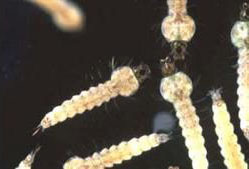
Above: Anopheles gambiae - 4th instar larvae (WHO/TDR/Stammers)
Lab members
PhD students
- Fred Aboagye-Antwi (2005-2009)
- Doug Patton (2008-2012)
- Rowida Baeshen (2008-2012)
- Esther Ekechukwu (2011-2015)
- Nahla Alhafez (2012-2016)
- Nancy Dawam (2014-ongoing)
- Nwamaka Akpodiete (2015-ongoing)
- Emmanuel Ottih (2017-ongoing)
Collaborative co-supervisions
- Noteila Khalid (2008, University of Khartoum, Soudan)
PhDs students on collaborative grants
- Abdoulaye Niang (2011), Hamidou Maiga (2011), Simon Sawadogo (2011)
Msc Students
- Dannielle Robins (2007)
- Simon Clegg (2007)
- Bamidele Alabi (2008)
- Nora Chilaka (2009)
- Angela Cartlidge (2011)
- Sandip Kaur (2011)
- Helen Bradbury (2012)
- Natasha Hurril (2013)
- Mauro Pazmino Bethancourt (2014)
- Aisha Carmichael (2015)
- Akbar Ganatraz (2015)
- Harry Thomas (2015)
- Katie Thornton (2015)
- Max Davies (2016)
- Camille White (2016)
- Gillian Curran (2018)
- Lewis Shackleford (2018)
- Dean Spence (2019)
- Felician Clement (2019)
- Salum Mapua (2019)
Postdoctoral Research Associates
Wellcome Trust Programme Grant (2008-2011)
- Vicky Carter, Emma Ward, Ibrahim Baber, Mahamoudou Touré
MRC-DFID African Research Leader Grant (2011-2016)
- Abdoulaye Niang (2016), Hamidou Maiga (2015), Simon Sawadogo (2014)
Target Malaria
- Florian Noulin, Holly Matthews
Anopheles funestus BMG project
- Badara Samb
MRC-AREF PDRA and ILAS fellow
- Seynabou Sougoufara
Visiting scientists
- Wan Fatma Zuharah (2016, Sabbatical, University of Sains Malaysia)
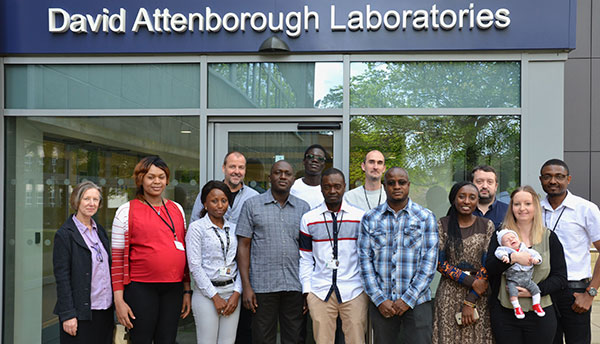
School of Life Sciences,
Huxley Building,
Keele University,
Staffordshire,
ST5 5BG
Tel: +44 (0) 1782 734414
Enquiries:
Tel: +44 (0) 1782 734414
Email: lifesciences.office@keele.ac.uk


